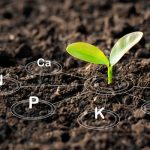Soil classification gives generalized information about the behavior and nature of soil belonging to a particular region or location. It also gives scientists, engineers, and agriculturists information about the kind of soil they are going to be dealing with.
There are many classification systems in place today that classify soils into different categories. Different countries have different classification parameters and classification standards that divide soils into different categories based upon their physical and chemical properties. In the US, the Unified Classification System and AASHTO Classification system are very popular. The Natural Resources Conversion Service is another classification system that works exclusively for agriculture. In the following sections of this article, we will discuss the details of the different classification systems.
In 1929, the Bureau of Public Roads proposed a classification system for soils. This was developed by C. A. Terzaghi and Charles Hogentogler in 1929, and today it is known as the AASHTO soil classification system. The classification system takes into account the Atterberg Limits (see
Soil Properties in this series) and particle grain size while categorizing soils into seven different groups named like A1, A2, and so on with the series ending at A7. This system is used for designing highways and it gives a clear idea about roadway pavement characteristics based upon the soil beneath the surface of road.
The AASHTO system also assigns a group index value to the soils. A1, A2, A8 are group classification values, with A1 being the best and A7 signifying worst kind of soil for highway design. On the other hand, group index values lying close to zero mean very good soil and anything close to 20 means very bad soils. The adjacent table divides soil constituents into groups based on the quantity passing through a 0.075 mm sieve during sieve analysis.
Image: AASHTO Soil Classification Chart – Please click to enlarge

Unified Soil Classification System (USCS)
The Unified Soil Classification System was developed by Cassagrande in 1942, and it divides soils into different groups like well graded soils, poorly graded soils, organic soils, and many other types. It is used by geotechnical engineers to determine particle size distribution and texture of soils. Each type of soil is represented as a two-letter symbol with the first letter defining the type of soil and the second letter designating its quality in terms of plasticity and grading. For instance, if more than 50% of soil passes through a 0.075 mm sieve, it belongs to the fine grained group. Now, if the soil sample has a liquid limit less than 50, it will be termed as ML or CL meaning silt or clay with low plasticity. If the soil sample is organic in nature, it will be simply mentioned as OL, both for silt and clay.

This Plasticity Chart is used to determine the nature of soil based on its plasticity index and liquid limit. Once we know about the nature of soil and its group index value, it is quite easy to work with the soil while doing construction work.

The USDA classification system is developed by the Natural Resources Conversion Service, and it categorizes soils from an agricultural point of view. The soils are divided into eleven different groups based upon factors like topographical conditions, water table, time, vegetation, etc. The following table will show how soils change their order with varying depth and degree of weathering.

Different types of soils under USDA soil classification system and their properties are discussed below.
Entisols – Shows no diagnostic horizon, second most abundant soil order on Earth occupying 16% of ice free land area.
Andisols – Formed in volcanic ash, contains high glass and colloidal proportions, occupies 1% of global land (ice free area).
Alfisols – Found in arid, humid, and hardwood forest covered regions, highly productive for food and fiber growth.
Aridisols – Found in arid and semi-arid regions, contain very low organic matter, water deficient and not suitable for plant growth
Gelisols – Also known as cryosols, found in very cold climates, dark colored soils, not rich in potassium and calcium, thus not very good for agricultural activities.
Histosols – Also known as organosols or peat, highly organic soils, possess low bulk density and poorly drained.
Inceptisols – Soils with slight horizon development, newly formed soils on tundra regions, and new volcanic deposits.
Vertisols – Clay rich soils, found in arid and sub-humid regions, dark in color, hydrate when wet and crack when dry.
Oxisols – Found in tropical rain forests, also known as laterite soils, contain oxides of iron, aluminum and other hydroxides that give it a red or yellowish color.
Spodosols – Also known as podzols, found in coniferous forests and humid regions, not good for agriculture as they have poor drainage.
Ultisols – Found in tropical and humid temperature regions, have reddish color and are acidic in nature, contain very high clay content.


